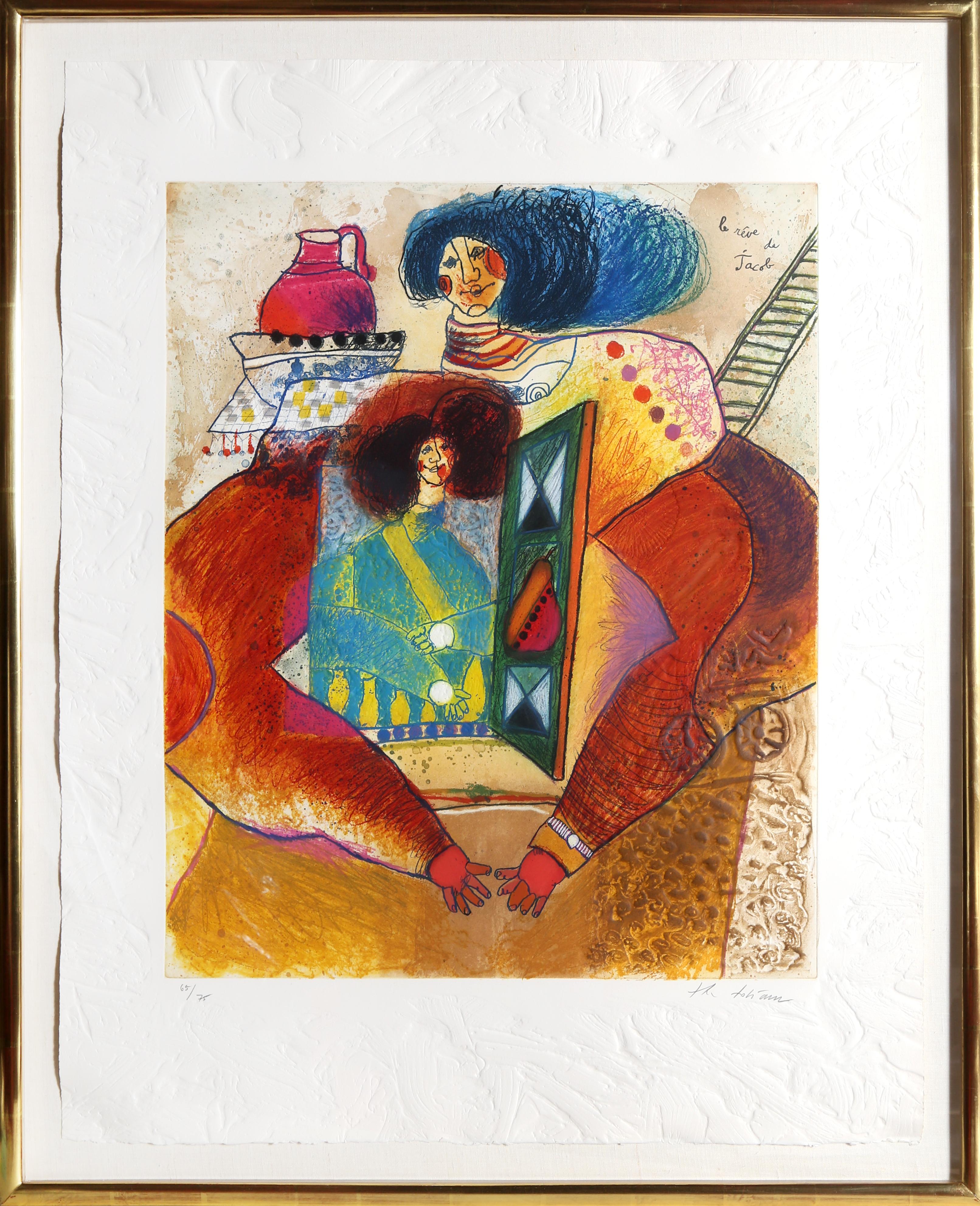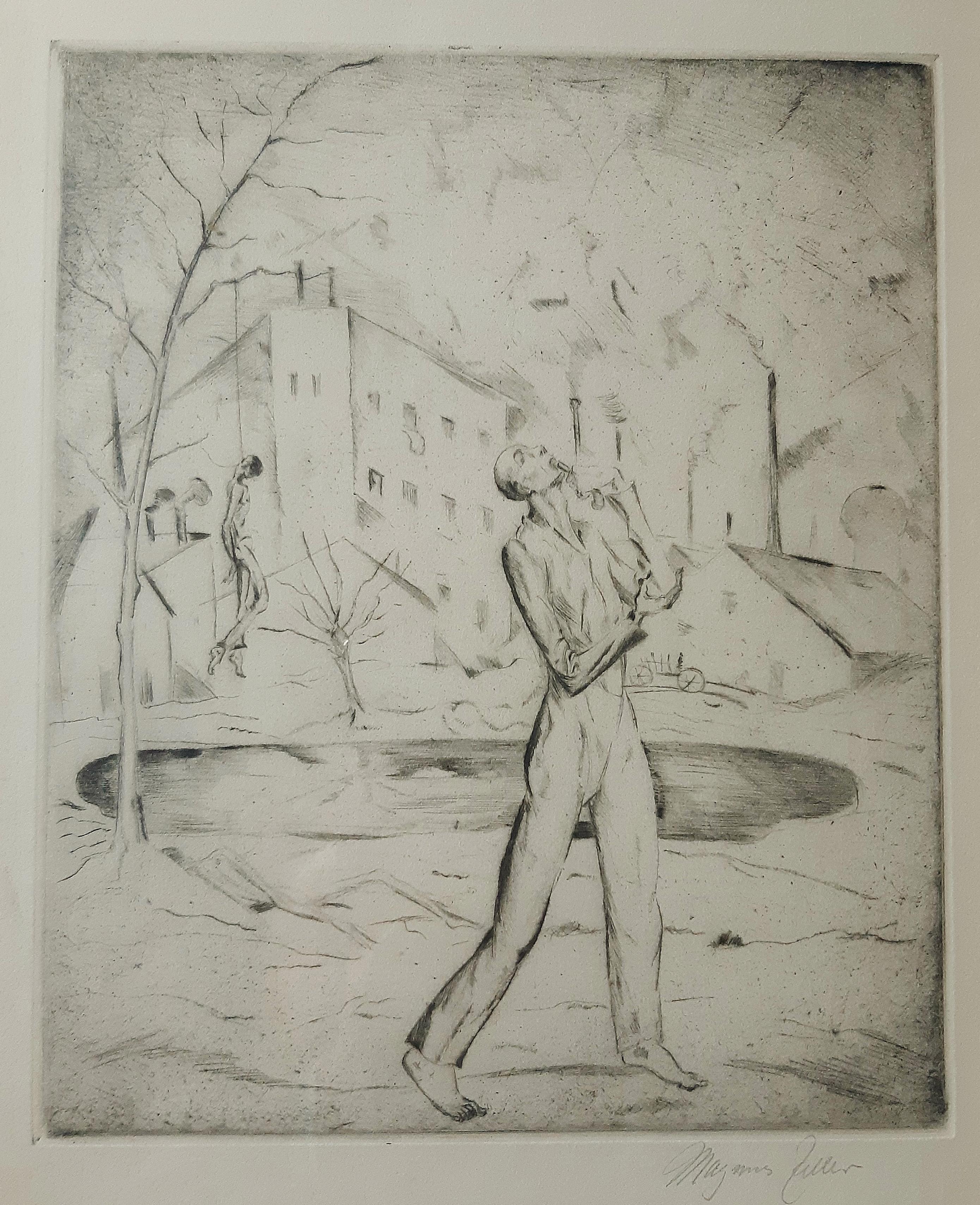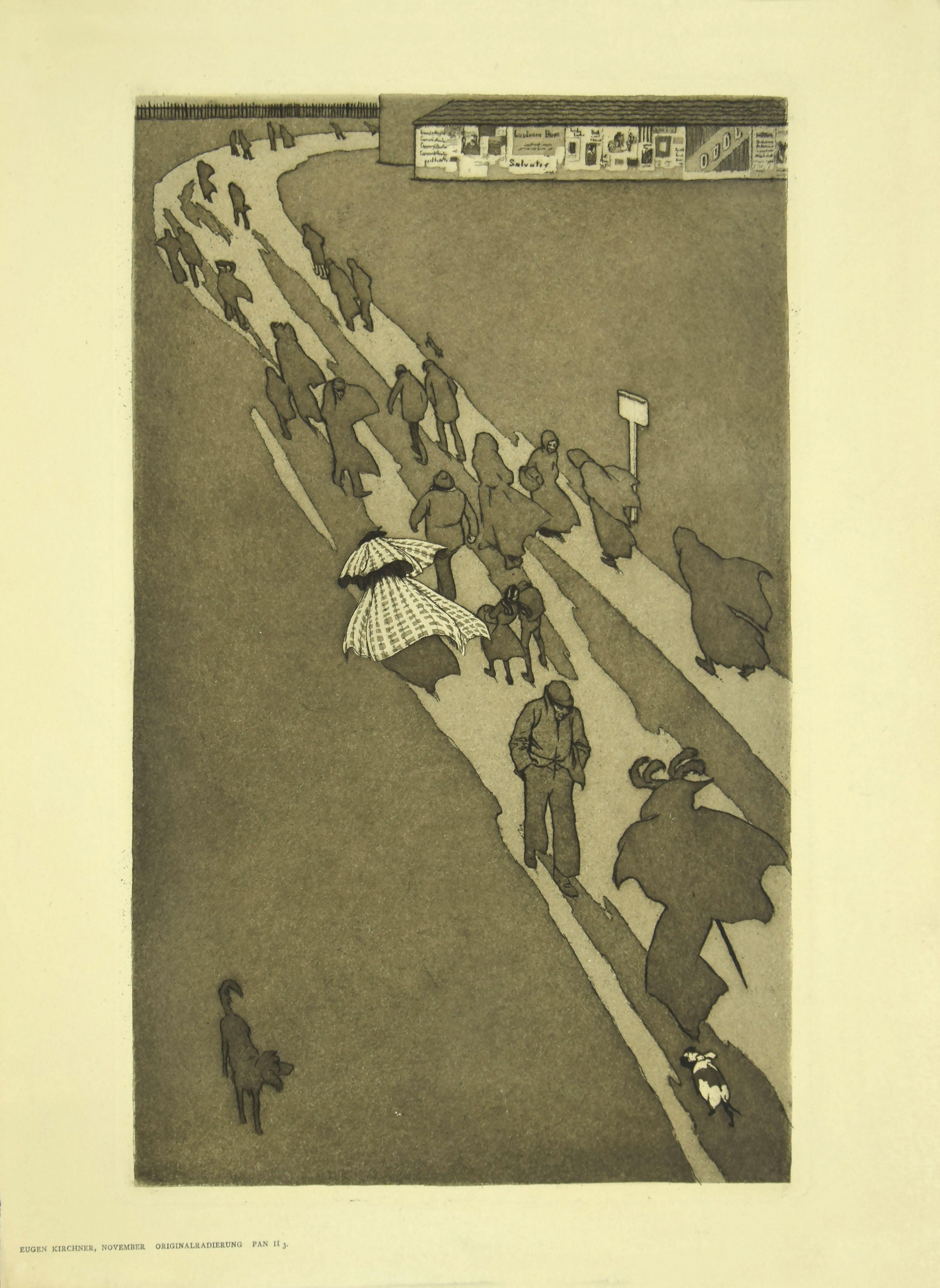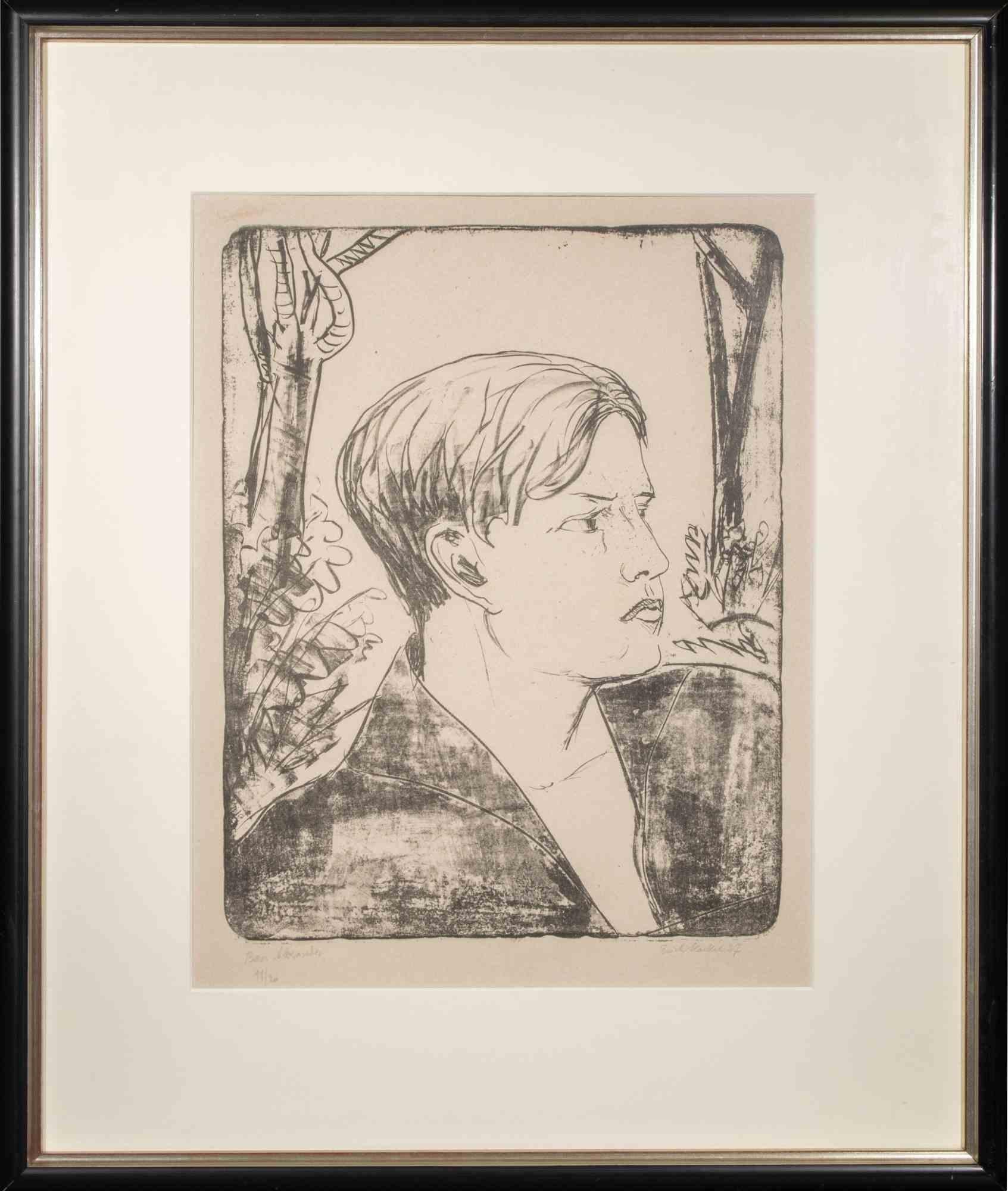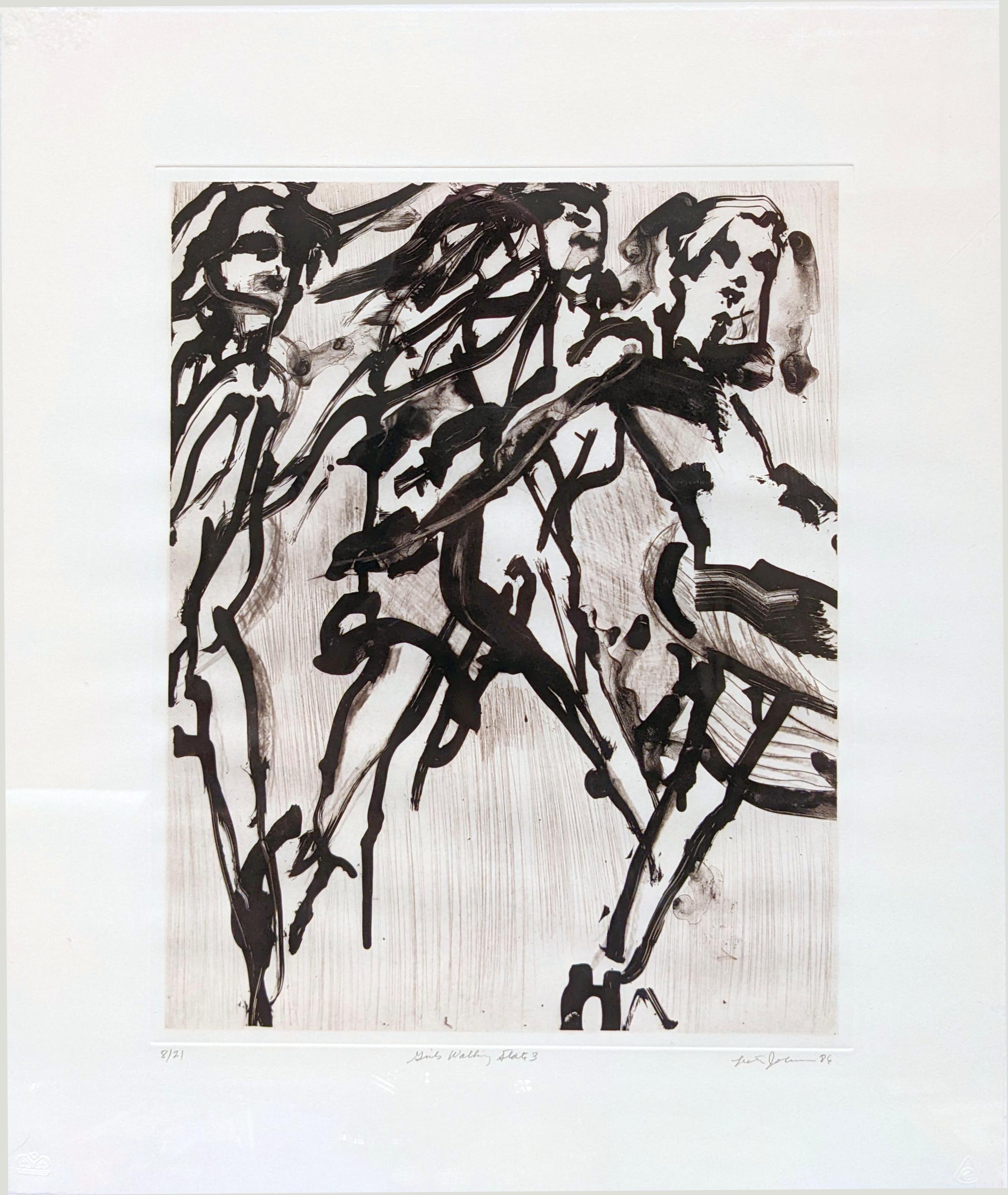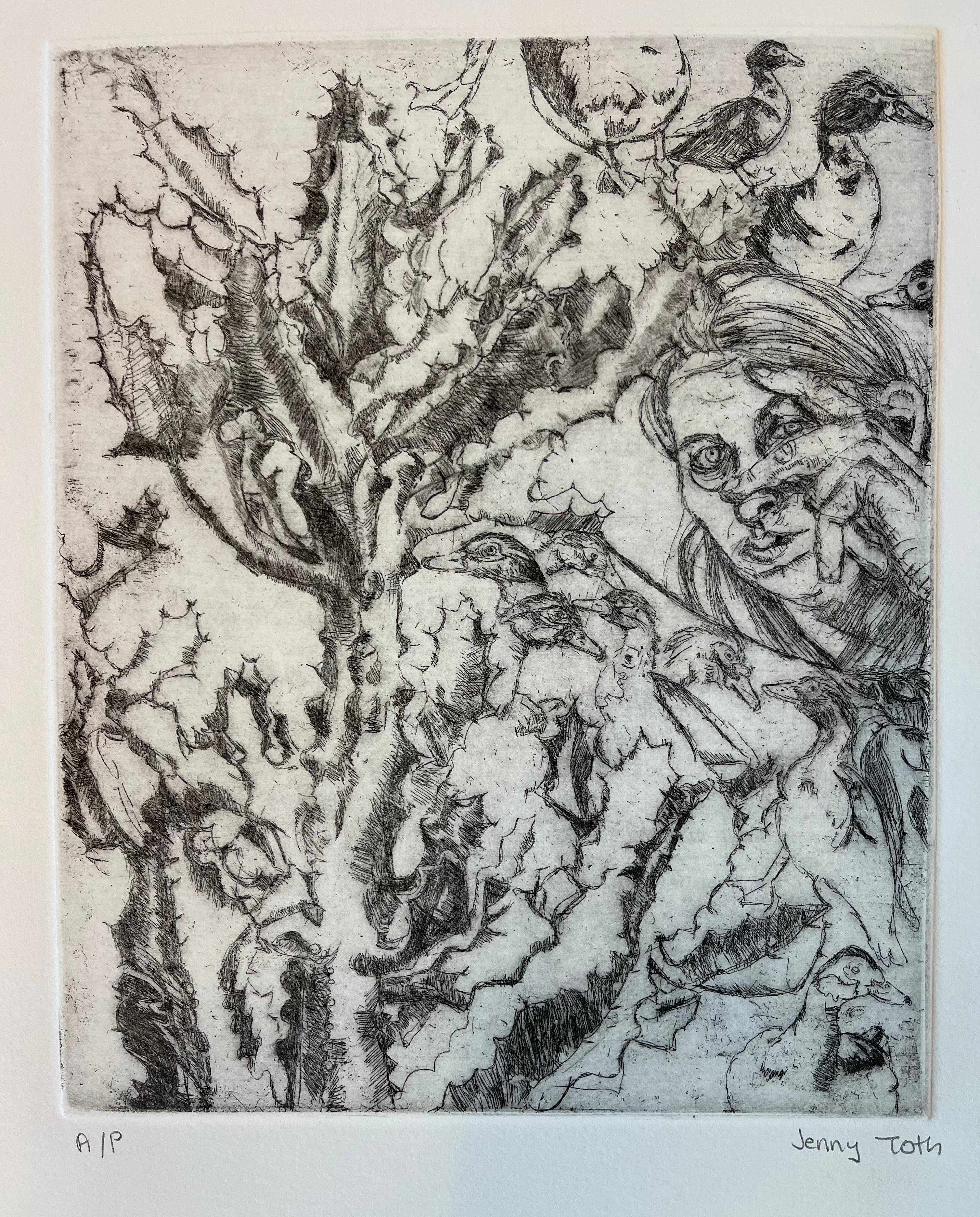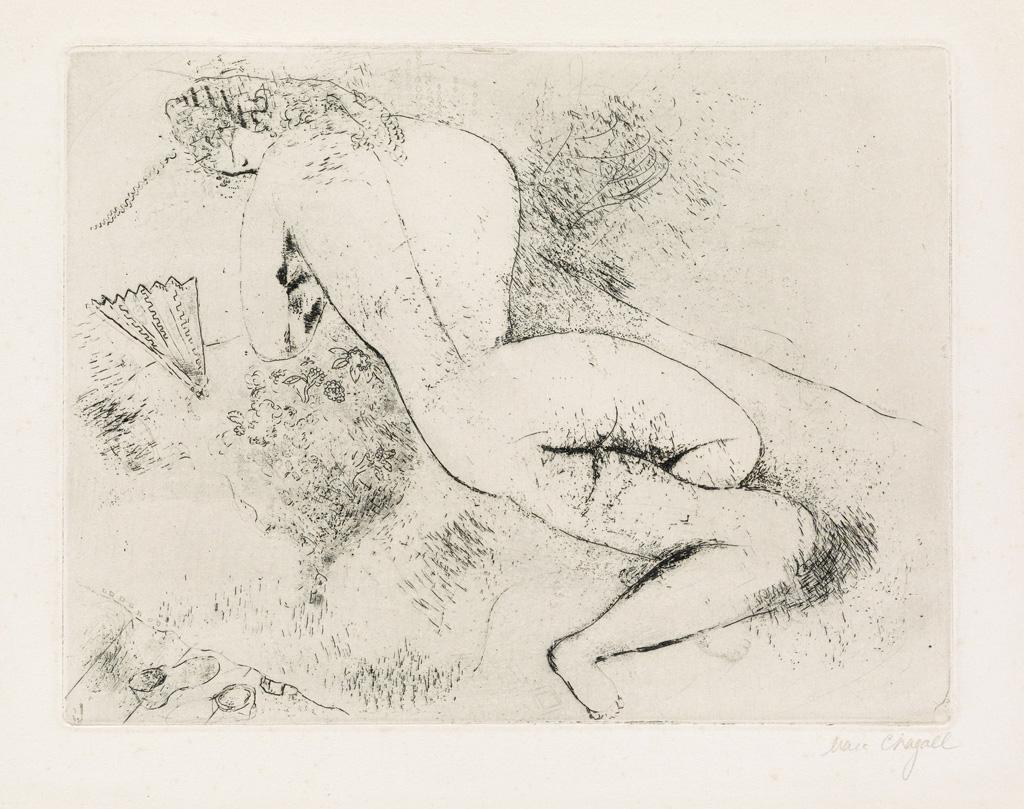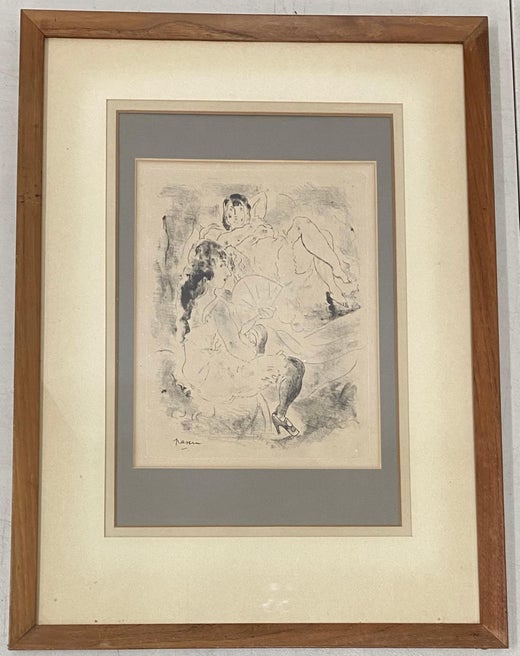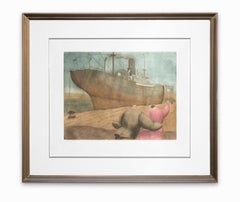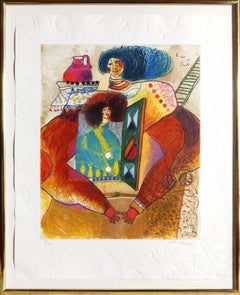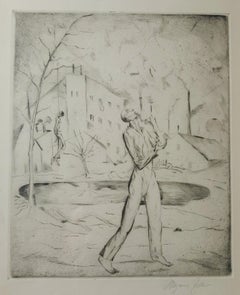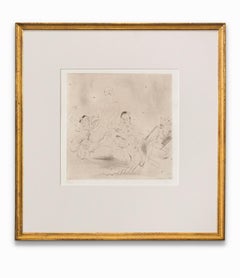
"King Solomon's Verdict" Etching, Linear Drawing, Nudes, Biblical Scene
View Similar Items
Want more images or videos?
Request additional images or videos from the seller
1 of 12
Jules Pascin"King Solomon's Verdict" Etching, Linear Drawing, Nudes, Biblical Scene1921-1925
1921-1925
Price:$1,890
$2,600List Price
About the Item
- Creator:Jules Pascin (1885-1930, Bulgarian, French)
- Creation Year:1921-1925
- Dimensions:Height: 21.75 in (55.25 cm)Width: 20.5 in (52.07 cm)
- Medium:
- Movement & Style:
- Period:
- Condition:
- Gallery Location:Detroit, MI
- Reference Number:1stDibs: LU128617697042
Jules Pascin
Jules Pascin was born Julius Mordecai Pincas, in Widdin, Bulgaria to a Spanish-Sephardic Jewish father and a Serbian-Italian mother. His early artistic training was in Vienna and Munich. In 1905, at the age of 20, he adopted the pseudonym Pascin (an anagram of Pincas). About the same time, he began contributing drawings to Simplicissimus, a satirical magazine published in Munich. In December 1905, Pascin moved to Paris, becoming part of the great migration of artists to that city at the start of the 20th century. In 1907, Pascin met Hermine Lionette Cartan David, also a painter, and they became lovers. They lived together until Pascin left for America on October 3, 1914. A few weeks later on October 31, Hermine David sailed for the United States to join Pascin. Pascin lived in the United States from 1914 to 1920, sitting out World War I. He taught at the Telfair Academy in Savannah, Georgia, associated with the Telfair Art Museum. He and Hermine painted in New York City as well as in Miami, New Orleans, and Cuba. Despite his social life, Pascin created thousands of watercolors and sketches, plus drawings and caricatures, which he sold to various newspapers and magazines. He studied the art of drawing at the Académie Colarossi and, like Henri de Toulouse-Lautrec, he drew upon his surroundings and his friends, both male and female, as subjects. He wanted to become a serious painter, but in time, he became deeply depressed over his inability to achieve critical success with his efforts. During the 1920s, Pascin mostly painted fragile petites filles, prostitutes waiting for clients, or models waiting for the sitting to end. His fleetingly rendered paintings sold readily, but the money he made was quickly spent. Famous as the host of numerous large parties in his flat, whenever he was invited elsewhere for dinner, he arrived with as many bottles of wine as he could carry. He frequently led a large group of friends on summer picnics beside the River Marne, where their excursions lasted all afternoon. Ernest Hemingway's chapter titled "With Pascin At the Dôme," in A Moveable Feast, recounted a night in 1923 when he had stopped off at Le Dôme and met Pascin escorted by two models. Hemingway's portrayal of the evening is considered one of the defining images of Montparnasse at the time. Pascin struggled with depression and alcoholism. "[D]riven to the wall by his own legend," according to art critic Gaston Diehl, he committed suicide at the age of 45 on the eve of a prestigious solo show. He slit his wrists and hung himself in his studio in Montmartre. On the wall he left a message written in blood, to a former lover, Cecile (Lucy) Vidil Krohg In his last will and testament, Pascin left his estate equally to his wife, Hermine David, and his mistress Lucy Krohg.
About the Seller
5.0
Vetted Professional Seller
Every seller passes strict standards for authenticity and reliability
Established in 2014
1stDibs seller since 2019
108 sales on 1stDibs
Typical response time: 8 hours
Authenticity Guarantee
In the unlikely event there’s an issue with an item’s authenticity, contact us within 1 year for a full refund. DetailsMoney-Back Guarantee
If your item is not as described, is damaged in transit, or does not arrive, contact us within 7 days for a full refund. Details24-Hour Cancellation
You have a 24-hour grace period in which to reconsider your purchase, with no questions asked.Vetted Professional Sellers
Our world-class sellers must adhere to strict standards for service and quality, maintaining the integrity of our listings.Price-Match Guarantee
If you find that a seller listed the same item for a lower price elsewhere, we’ll match it.Trusted Global Delivery
Our best-in-class carrier network provides specialized shipping options worldwide, including custom delivery.More From This Seller
View AllJacob Steinhardt Woodcut Print "Rachel Weeping For Her Children" Signed Numbered
By Jacob Steinhardt
Located in Detroit, MI
“A voice is heard in Ramah, mourning and great weeping, Rachel weeping for her children and refusing to be comforted, because they are no more.” This verse from Jeremiah 31:15 is the subject of this woodcut print by Jacob Steinhardt, depicting Rachel, who was the mother of the tribes of Joshua and Benjamin, and who was the wife of Jacob who was Israel, weeping for her children which is to be understood as after the destruction of the First Temple in Jerusalem, the Israelites were clustered into Ramah, the home of the Benjaminites, before being taken into the Babylonian captivity; Rachel is weeping for the destruction and expulsion of her descendants. This work is exemplary of the Jewish themes of Jacob Steinhardt, a German Jew...
Category
1960s Expressionist Figurative Prints
Materials
Woodcut
Max Weber Woodcut Print from "Primitives" Poetry Book Signed
By Max Weber
Located in Detroit, MI
ONE WEEK ONLY SALE
This woodcut print is an expressionist print on one of the poems from Max Weber's poetry collection "Primitives: Poems and Woodcuts". This work is signed in penci...
Category
1920s Expressionist Figurative Prints
Materials
Woodcut
Antonio Lopez Saenz Aquatint "Hombres y Sillos" (Men and Chairs)
By Antonio Lopez Saenz 1
Located in Detroit, MI
SALE ONE WEEK ONLY
Antonio Lopez Saenz is a brilliant iconic creative artist from Mazatlan, Mexico. The aquatint “Hombres y Sillos” (Men and Chai...
Category
1980s Contemporary Figurative Prints
Materials
Aquatint
Antonio Lopez Saenz Aquatint "Pareja" (Partner)
By Antonio Lopez Saenz 1
Located in Detroit, MI
SALE ONE WEEK ONLY
Antonio Lopez Saenz is a brilliant iconic creative artist from Mazatlan, Mexico. The aquatint “Pareja” (Partner) was created in...
Category
1980s Contemporary Figurative Prints
Materials
Aquatint
"Nuit d'été (Summer's Night)" Lithograph, Colors, Linear Figures on Black Ground
By Marc Chagall
Located in Detroit, MI
SALE ONE WEEK ONLY
Marc Chagall is clearly a Modernist. Though titled "Summer Night" it could just as easily be identified as a scene from Shakespeare...
Category
Late 20th Century Modern Figurative Prints
Materials
Rag Paper, Lithograph
"History of Detroit" Linoleum Cut, Black Ink, African American, Mural Style
By Hubert Massey
Located in Detroit, MI
"History of Detroit" is in the style of a mural by the master muralist from the city of Detroit, Hubert Massey. It renders in dramatic composition the ov...
Category
Early 2000s American Modern Figurative Prints
Materials
Linocut
You May Also Like
Auction
By Bernhard Kretzschmar
Located in New York, NY
Bernard Kretzschmar (1889-1972), Auction, etching, drypoint, and burnished aquatint, 1921, signed and dated (’20) in pencil lower right [also initialed in the plate lower left] Refe...
Category
1920s Expressionist Figurative Prints
Materials
Drypoint, Etching, Aquatint
"Juges" from the suite "Les Fleurs du Mal""
By Georges Rouault
Located in San Francisco, CA
This artwork titled "Juges" from the suite "Les Fleurs du Mal" created in 1937/38, is an original color aquatint on Montval paper by renown French artist Georges Rouault, 1871-1958....
Category
Mid-20th Century Expressionist Figurative Prints
Materials
Aquatint
Le Reve de Jacob, Large Framed Expressionist Etching by Theo Tobiasse
By Théo Tobiasse
Located in Long Island City, NY
Artist: Theo Tobiasse, French (1927 - 2012)
Title: Le Reve de Jacob
Year: 1984
Medium: Etching with Carborundum, signed and numbered in pencil
Edition: 65/75
Image: 27 x 22.5 inc...
Category
1980s Expressionist Figurative Prints
Materials
Etching
$1,320 Sale Price
20% Off
Selbstmörder - Original Etching and Drypoint by Magnus Zeller - 1919
By Magnus Zeller
Located in Roma, IT
Selbstmörder is an original drypoint, realized by Magnus Zeller in 1919, signed and inscribed,
Included a frame.
In very good conditions.
The artwork is representing a desperate m...
Category
1910s Expressionist Figurative Prints
Materials
Drypoint, Etching
$1,081 Sale Price
25% Off
The Exodus - Original Etching by Eugen Kirchner - Early 20th Century
By Eugen Kirchner
Located in Roma, IT
The City is an original etching realized by Eugen Kirchner.
Image dimension: 31.5 x 19 cm.
Not signed.
In good conditions.
The artwork represents an Expressionist expression of p...
Category
Early 20th Century Expressionist Figurative Prints
Materials
Etching
Ben Alexander - Etching by Erich Heckel - 1927
By Erich Heckel
Located in Roma, IT
Lithograph on laid paper realized by Heckel in 1927.
Signed and dated in pencil lower right.
Hand numbered 11/20 lower left.
Provenance: Galerie Vayhinger, Radolfzell, Private Col...
Category
1740s Expressionist Figurative Prints
Materials
Etching
$1,621 Sale Price
25% Off

